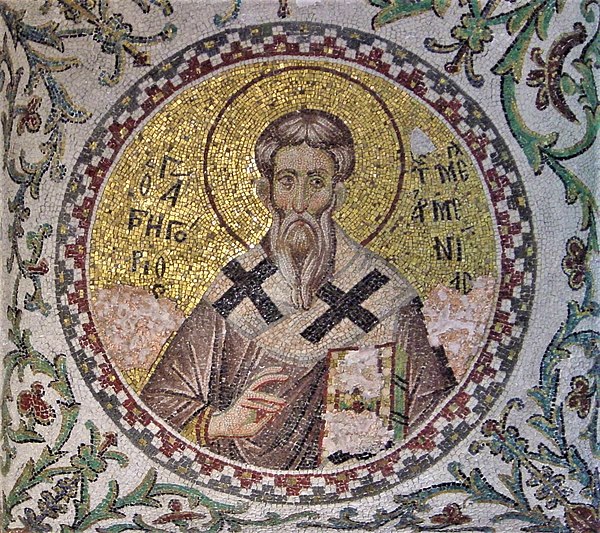What Is an Armenian Catholic?
Armenia is an ancient nation and the first nation to ever make Christianity the official state religion – back in 301 AD. (By way of contrast, the Roman Empire made Christianity its official state religion in 380 AD.) Modern day Armenia is bordered by Georgia to the north, Azerbaijan to the east, Iran to the south, and Turkey to the west. Its capital and largest city is Yerevan.
Today there are 350,000 Armenian Catholics located in Armenia, Syria, Iran, Iraq, Lebanon, Turkey, Egypt, Greece, Ukraine, Russia, France, Romania, United States, and Argentina. However, most Armenians are Orthodox, not in union with Rome. It is estimated that there are between 8 and 10 million such Armenian Orthodox Christians worldwide. The majority of Armenian Orthodox Christians live in Armenia, where the Armenian Apostolic Church is the national church. There are also significant Armenian Orthodox communities in countries such as Lebanon, Syria, Iran, Russia, and the United States.
For more information on how the Armenian Catholic Church came about and was reunited with Rome, please click here.
What Was the Armenian Genocide?
The Armenian Genocide was the systematic extermination of the Armenian people by the Islamic Ottoman Empire during World War I. The Ottoman government, controlled by the Committee of Union and Progress (CUP), believed that the Armenians, who were a Christian minority in the Muslim Ottoman Empire, were a threat to their state and aligned with the enemy in the war.
Starting in April 1915, the Ottoman government began to round up and deport Armenians from their homes in Anatolia, in what is now modern-day Turkey. Many Armenians were forced to march long distances in what is now known as the Armenian death marches. They were subjected to starvation, dehydration, and brutal treatment. Many were even killed outright, through mass shootings and other forms of violence.
The Armenian Genocide is estimated to have resulted in the deaths of 1.5 million Armenians, along with the displacement of hundreds of thousands more. In addition to many Orthodox Armenians who died, five Armenian-Catholic bishops, 140 priests, 42 religious, and 85,000 faithful became victims of the genocide and lost their lives.
The genocide is widely recognized by scholars and historians as one of the first instances of modern genocide. However, the government of Turkey still denies that the events constitute a genocide and disputes the death toll. It is documented that, while unsuccessful, Pope Benedict XV sought to intervene and aid the Armenians.
St. Gregory the Illuminator, Patron Saint of Armenians
St. Gregory is the patron saint and first official head of the Armenian Apostolic Church. He was responsible for converting Armenia from paganism to Christianity in 301 AD. However, the ‘seeds’ for Armenia’s Christianity were planted by St. Bartholomew and St. Jude, two of the Twelve Apostles (also known as Nathaniel and Thaddeus, respectively). St. Bartholomew converted the king. The king’s brother was enraged and, fearing a Roman attack, had St. Bartholomew tortured (flayed alive) and beheaded. Tradition holds that while St. Jude helped evangelize the area, he was martyred in Syria. Some of his relics, however, were transferred to Armenia and preserved at the Saint Thaddeus Monastery (now in northern Iran).
 St. Gregory the Illuminator, an Armenian nobleman, is recognized for evangelizing Armenia so rapidly that Armenia became the first nation to adopt Christianity as its state religion. After suffering greatly at the hands of King Trdat III (Tridates), St. Gregory merited the graces for the king’s conversion. With the king’s support, he led massive “people movements” to Christ. St. Gregory destroyed many pagan temples throughout the land and raised churches in their stead. He exorcised many demons and baptized thousands.
St. Gregory the Illuminator, an Armenian nobleman, is recognized for evangelizing Armenia so rapidly that Armenia became the first nation to adopt Christianity as its state religion. After suffering greatly at the hands of King Trdat III (Tridates), St. Gregory merited the graces for the king’s conversion. With the king’s support, he led massive “people movements” to Christ. St. Gregory destroyed many pagan temples throughout the land and raised churches in their stead. He exorcised many demons and baptized thousands.
This is the first case where a king’s conversion led to the conversion of a nation. This national conversion took place during the most severe Roman persecution, that of Diocletian (known to history as the Great Persecution). It preceded by a dozen years Constantine’s edict of 313 AD whereby Christians were tolerated, but paganism was not banned, as it was in Armenia.
The feast day of St. Gregory was set by Pope Gregory XVI in September 1837 to be October 1st and listed in the Mass in Some Places (pro aliquibus locis) section of the Roman Missal. May St. Gregory pray for all Armenians to unite in the True Faith and to reject all errors of modernism, liberalism, and Islam which infect the nations inhabited by Armenians.
St. Gregory the Illuminator, Pray for All Armenians
Almighty God, Who didst raise up Thy servant Gregory to be a light in the world, and to preach the Gospel to the people of Armenia: Illuminate our hearts, that we also in our own generation may show forth Thy praise, Who hast called us out of darkness and into Thy marvelous light; through Jesus Christ our Lord, Who liveth and reigneth with Thee and the Holy Ghost, one God, now and forever. Amen.




